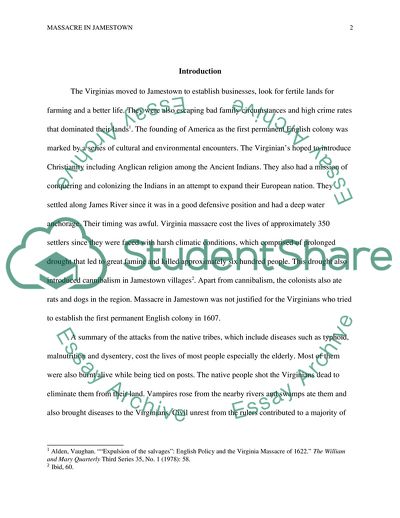Cite this document
(Establishing the First Permanent English Colony and Massacre in Jamestown Case Study Example | Topics and Well Written Essays - 1750 words, n.d.)
Establishing the First Permanent English Colony and Massacre in Jamestown Case Study Example | Topics and Well Written Essays - 1750 words. https://studentshare.org/history/1862107-arguing-a-topic-from-1492-1877
Establishing the First Permanent English Colony and Massacre in Jamestown Case Study Example | Topics and Well Written Essays - 1750 words. https://studentshare.org/history/1862107-arguing-a-topic-from-1492-1877
(Establishing the First Permanent English Colony and Massacre in Jamestown Case Study Example | Topics and Well Written Essays - 1750 Words)
Establishing the First Permanent English Colony and Massacre in Jamestown Case Study Example | Topics and Well Written Essays - 1750 Words. https://studentshare.org/history/1862107-arguing-a-topic-from-1492-1877.
Establishing the First Permanent English Colony and Massacre in Jamestown Case Study Example | Topics and Well Written Essays - 1750 Words. https://studentshare.org/history/1862107-arguing-a-topic-from-1492-1877.
“Establishing the First Permanent English Colony and Massacre in Jamestown Case Study Example | Topics and Well Written Essays - 1750 Words”. https://studentshare.org/history/1862107-arguing-a-topic-from-1492-1877.


